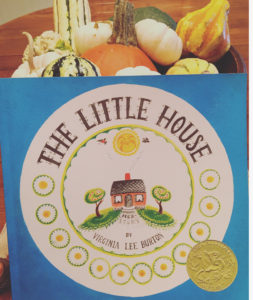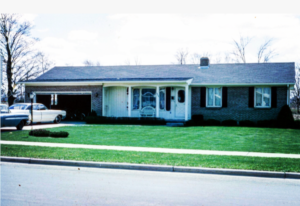The Little House is Timeless
I have enjoyed recollecting books from my past as I have prepared to write my blogs about “timeless” literature. Another book that I loved as a kid was the book The Little House by Virginia Lee Burton. I believe I was in third or fourth grade when my teacher read us this story. When I became a teacher I bought the book to read to my class because I remembered how much I loved it. I’ve asked myself just what it was that I loved about that book as a child. It doesn’t have an adventurous or mysterious plot. The main character is a house, not a fascinating person or an interesting animal. But yet there was something very endearing about the little house. I saw life through her eyes. I glimpsed the beauty of the countryside and how it changed through each season, the children at play, the sun filled days and dark starry nights. I viewed nature in all its glory. And I observed how time and progress changed things for the little house just as it does in our lives. That is what I loved about the book and this is what children still love today. It is timeless because some things in life don’t change. Night becomes day, the seasons change; each bringing its own beauty, and time along with progress change our surroundings and our lives.
As an adult, The Little House takes my memories back to the little house where I spent my childhood. So many happy times were spent in our neighborhood. When we first lived there our house was one of a few that had been built on our street. All the property behind us was a vacant field where we could play and explore. When I drive past my little house today there are still children playing in the yard but there is no field, only houses as far as the eye can see. It is pleasant to recollect a simpler time that has now gone by. People still have “a little house”, they place where they grew up, and that is why this book is timeless.
It’s interesting that almost all of my favorite books when I was in elementary school were books my teacher read to the class. That is a powerful truth for parents and teachers. It is very important to read books aloud to children. As adults we can ignite the love of reading in children when we make the written print come alive.
I will share a few ideas I used when reading The Little House to my students.
- Discuss the theme of the story
- Identify the cause and effect relationships in the story
- Discuss the setting of the story and why it is important to the plot
- Describe what life was like for the little house in each of the four seasons, what are the characteristics of each season
- Discuss the main character (the little house), can the students think of other books where the main character is a thing
- Summarize the plot of the story (include the setting, main character, problem, main events, and solution)
- The copyright was 1942. Have a conversation about what life was like in 1942. Students could do some simple research on what was happening in our country during this time period
- Teach personification (gives a thing, an idea, or an animal a human quality) as a literary device, and identify how it was used in The Little House
- Many children go through changes just as the little house lived through change. Discuss change and how it is part of life.
Shelli



